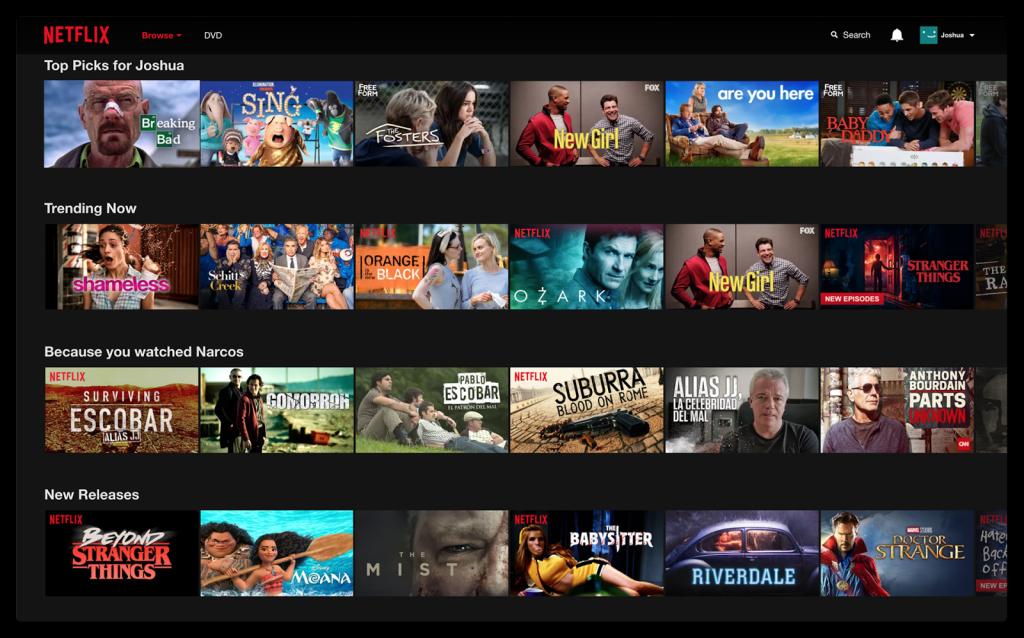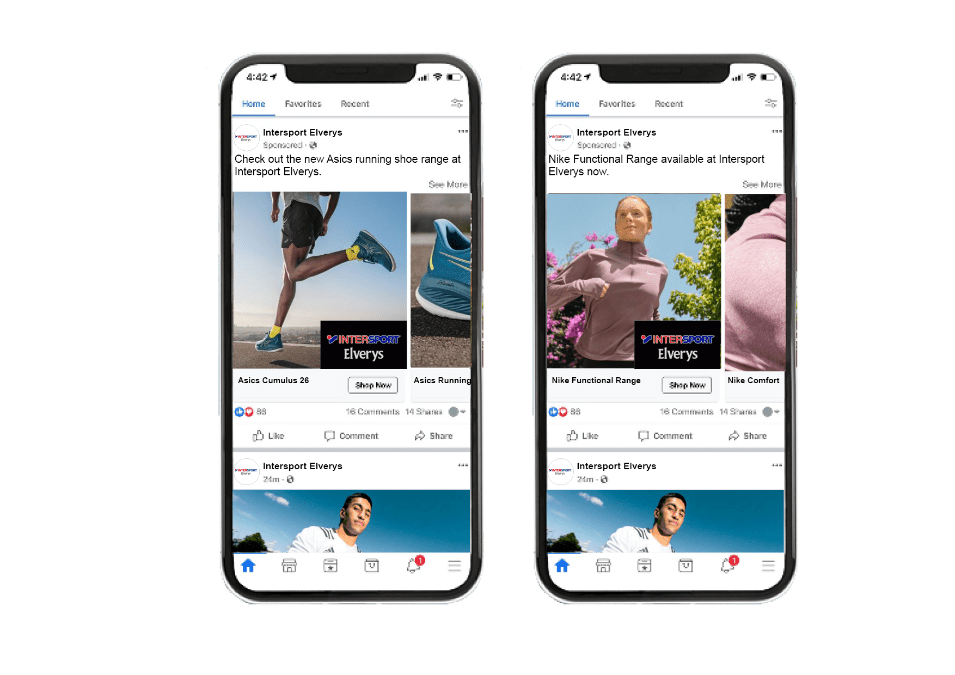In today’s hyper-competitive digital landscape, personalisation has become an extremely important part of effective marketing strategies. Consumers are inundated with a barrage of advertisements daily, making it crucial for businesses to stand out. Personalisation, the practice of tailoring marketing messages and experiences to individual consumers, helps brands cut through the noise and connect with their audience on a deeper level. This blog explores the impact and power of personalisation in marketing, emphasising the importance of creative content in succeeding on platforms like Google Search, Performance Max, and Meta.
In a world increasingly driven by AI, personalisation has become crucial in enhancing user experiences and fostering customer loyalty. AI enables businesses to analyse vast amounts of data and tailor their offerings to individual preferences, creating more relevant and engaging interactions. Personalised experiences can significantly improve satisfaction by making users feel understood and valued, whether through customised product recommendations, targeted content, or adaptive learning paths. In an era where generic approaches fall short, personalisation powered by AI helps organisations stand out, build stronger relationships, and drive better outcomes.
The Evolution of Personalisation in Marketing
Personalisation in marketing has evolved significantly over the years. Initially, it was as simple as addressing customers by their first names in email campaigns. However, advancements in technology and data analytics have enabled marketers to deliver highly tailored experiences based on a myriad of factors, including consumer behavior, preferences, demographics, and past interactions.
This evolution is driven by the growing expectation among consumers for relevant and meaningful interactions with brands. According to a report by Epsilon, 80% of consumers are more likely to make a purchase when brands offer personalised experiences. This statistic underscores the importance of personalisation in driving consumer engagement and boosting conversion rates.
As we enter a cookieless era in marketing, it’s imperative to stay ahead of the game in areas we can control. Focusing on creative personalisation and getting closer to our consumers is essential. The evolution of personalisation has progressed from relying solely on first-party data to a more intricate approach, delivering effective creatives tailored to different stages of the purchasing journey. Transitioning from awareness directly to purchase is common, depending on the product, which makes personalisation challenging to perfect, but not impossible assuming a few key fundamentals are followed.
Best Practices for Personalised Creatives
1. Data-Driven Insights
Use data analytics to understand your audience’s preferences, behaviors, and pain points. This insight should inform the development of your creatives, ensuring they are relevant and appealing to your target audience.
2. Segmentation
Segment your audience based on various criteria such as demographics, purchase history, and browsing behavior. This allows for more precise targeting and the creation of personalised content for each segment.
3. Dynamic Content
Leverage dynamic content capabilities to automatically tailor ads based on user data. This can include personalised product recommendations, tailored offers, and customised messages that resonate with individual users.
4. A/B Testing
Continuously test different versions of your creatives to determine what resonates best with your audience. A/B testing helps refine your approach and improve the effectiveness of your personalised marketing campaigns.
5. Consistent Branding
While personalisation is key, maintaining consistent branding across all touchpoints is crucial. Ensure that your personalised creatives align with your brand’s voice, style, and messaging to build a cohesive brand experience.
The Power of Personalisation
1. Enhanced Customer Experience
Personalisation enhances the customer experience by delivering relevant content, offers, and recommendations. This relevancy fosters a sense of connection and loyalty. For instance, Netflix’s recommendation algorithm, which suggests shows and movies based on viewing history, is a prime example of personalisation that significantly enhances user satisfaction.

2. Increased Engagement
Personalised marketing campaigns tend to have higher engagement rates. Customised emails, for instance, see higher open and click-through rates compared to generic ones. Tailored content resonates more with the audience, making them more likely to interact with the brand.
3. Improved Conversion Rates
Personalisation can significantly improve conversion rates. By presenting consumers with products or services they are interested in, marketers can effectively guide them down the sales funnel. Dynamic content on e-commerce websites, such as personalised product recommendations, can lead to increased sales and reduced cart abandonment rates.
4. Better ROI
Investing in personalisation can yield a higher return on investment (ROI). Targeted marketing campaigns are more efficient, reducing wasted spend on uninterested audiences and maximising the impact of marketing efforts.
Keeping best practices at the forefront of our approach, this allows us to follow the same fundamentals no matter the industry, product or client. While this blog explores the importance of having a personalised approach, it will also touch on the importance of having a good foundation that can be applied across the board at scale to better facilitate your business goals. With that being said, we will now explore the role of creatives in personalisation.
The Role of Creatives in Personalisation
While data and technology are the backbones of personalisation, creatives play an equally vital role in the performance in any marketing effort. Below will highlight a few campaign types which benefit greatly from a personalised approach and how we as marketers can make an impact right from the start.
Google Search and Performance Max
Google Search has evolved to prioritise user intent and relevance. Personalised ad creatives that align with user queries and intent can improve ad relevance scores, leading to better ad placements and lower costs per click.
Performance Max, Google’s AI-driven campaign type, leverages machine learning to optimise ads across Google’s entire inventory, including Search, Display, YouTube, and more. Creative assets in Performance Max campaigns need to be highly versatile and tailored to different stages of the customer journey to maximise performance.
For instance, a travel company might use vibrant, personalised video ads showcasing destinations a user has previously shown interest in, this can be done via a remarketing ad. The Creative could include Ad copy adjusted to suit the consumer’s updated journey rather than a generic “Book Now”. This level of personalisation, combined with compelling creatives, can significantly enhance campaign performance and drive higher engagement and conversions.
As the consumer, you are more likely to click on an ad that “picks up where you left off” rather than having to go through the process all over again. This is a very brief look into the role that personalisation can play into the path to conversion for a consumer using Google ads and Pmax
Meta (Facebook and Instagram)
Meta platforms, such as Facebook and Instagram, offer robust targeting options that allow for deep personalisation. Creatives on these platforms must be visually appealing and resonate with the audience’s interests and behaviors. Meta’s ad algorithms favor engaging content that keeps users on the platform longer, so personalised creatives that capture attention quickly are essential.

Dynamic ads on Meta can automatically show personalised content to users based on their interactions with a brand’s website or app. For example, a fashion retailer can display ads featuring products a user has browsed but not purchased, coupled with a discount offer. Such personalisation not only enhances the user experience but also drives higher click-through rates and conversions.
Conclusion
In an era where consumers expect more from brands, personalisation has emerged as a powerful tool in the marketer’s arsenal. By delivering relevant and engaging experiences, personalisation not only enhances customer satisfaction but also drives higher engagement, conversions, and ROI. The role of creatives in this process cannot be overstated. High-quality, personalised creatives are essential for succeeding on platforms like Google Search, Performance Max, and Meta, where capturing and retaining user attention is paramount.
As technology continues to evolve, the potential for personalisation in marketing will only grow. Brands that invest in understanding their customers and delivering tailored experiences will be well-positioned to thrive in the competitive digital landscape.
